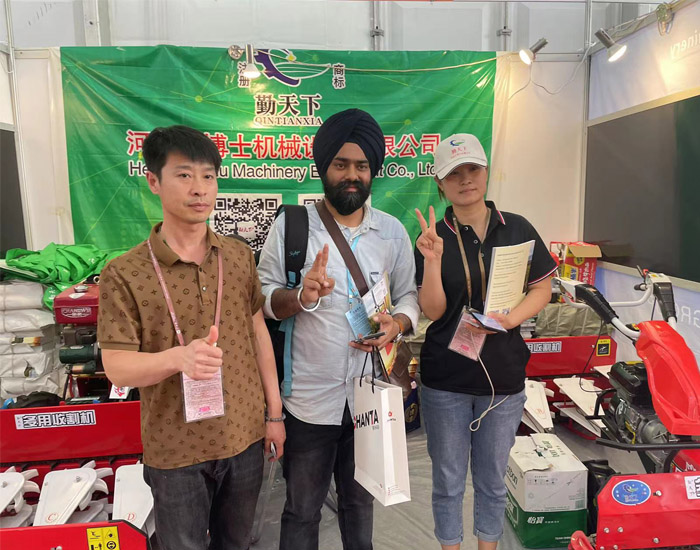tractor wheat cutting machine
The Evolution of the Tractor Wheat Cutting Machine
The agricultural landscape has witnessed significant technological advancements over the years, transforming traditional farming practices into more efficient and productive ones. Among the most influential innovations is the tractor wheat cutting machine, which has revolutionized the way farmers harvest wheat. This article delves into the history, functioning, and impact of this essential agricultural tool.
Historical Context
The evolution of the tractor wheat cutting machine can be traced back to the late 19th and early 20th centuries, during a period when agriculture began embracing mechanization. Before this innovation, wheat harvesting was a labor-intensive process, primarily reliant on manual labor and simple tools like sickles and scythes. Harvesting wheat required extensive manpower and considerable time, making it a daunting task for farmers.
The introduction of the mechanical reaper by Cyrus McCormick in 1831 marked a significant turning point in harvesting practices. This machine mechanized the cutting process, allowing farmers to harvest crops more efficiently. However, it wasn't until tractors became widespread in the early 1900s that the true potential of mechanized wheat harvesting was realized. The integration of tractors with wheat cutting machines offered a powerful solution to the challenges faced by farmers.
How Tractor Wheat Cutting Machines Work
A tractor wheat cutting machine typically consists of several components, including a cutting header, which is designed to sever the wheat stalks at their base, and a gathering system that collects the cut wheat into manageable bundles
. The tractor provides the necessary power to operate the cutting machine, enabling it to traverse large fields swiftly.Modern machines are equipped with advanced features such as adjustable cutting heights, ensuring that farmers can customize the operation to suit the specific conditions of their fields. Hydraulic systems are often incorporated to facilitate easy maneuverability and to adapt to varying terrains. With improvements in technology, many cutting machines have also embraced automation, utilizing GPS and advanced sensors to optimize performance and increase efficiency.
tractor wheat cutting machine

Benefits of Using Tractor Wheat Cutting Machines
1. Increased Efficiency One of the most significant advantages of tractor wheat cutting machines is the dramatic increase in efficiency. While traditional methods could take weeks to complete the harvest, modern machines can finish the job in a matter of days, allowing farmers to allocate their time and resources more effectively.
2. Labor Savings With the rising cost of labor and the declining availability of farmworkers, the tractor wheat cutting machine provides a practical solution to labor shortages. It reduces the number of workers needed for harvesting, allowing farmers to operate with leaner teams.
3. Improved Crop Quality These machines are designed to make clean cuts, reducing the loss of crop and minimizing damage to the stalks and grains. This careful harvesting process leads to better overall crop quality, which is essential for maximizing yields and profitability.
4. Flexibility and Versatility Modern cutting machines can not only harvest wheat but can also be adapted for other cereal crops. This versatility makes them a valuable asset for farmers who grow multiple types of grains.
Conclusion
The tractor wheat cutting machine represents a pivotal advancement in agricultural technology. By reducing labor costs, increasing efficiency, and improving the quality of harvested crops, these machines have become indispensable to the modern farming industry. As technology continues to evolve, we can expect further innovations in tractor wheat cutting machines, making them even more efficient and sustainable.
In an era where food security is becoming increasingly important, the role of mechanized farming cannot be overstated. The tractor wheat cutting machine is not merely a tool; it symbolizes the ongoing journey towards a more productive and sustainable agricultural sector. As we look to the future, embracing such innovations will be critical in addressing the challenges posed by a growing global population and the environmental impacts of agriculture.
Latest news
-
When to Upgrade Your Old Forage HarvesterNewsJun.05,2025
-
One Forage Harvester for All Your NeedsNewsJun.05,2025
-
Mastering the Grass Reaper MachineNewsJun.05,2025
-
How Small Farms Make Full Use of Wheat ReaperNewsJun.05,2025
-
Harvesting Wheat the Easy Way: Use a Mini Tractor ReaperNewsJun.05,2025
-
Growing Demand for the Mini Tractor Reaper in AsiaNewsJun.05,2025







